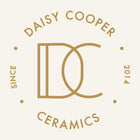Clay is a type of fine-particle soil containing clay material. When mixed with water, these tiny particles slide over each other without breaking. This is what gives ‘plasticity’ to clay, which is the property of being malleable (otherwise it’d crumble into pieces when being handled). When dry, clay becomes hard and non-plastic, and then reaches full maturity when fired (that’s when it becomes a ceramic piece!).
Most natural clays are white or light coloured. However, some show a variety of other colours due to containing different impurities and minerals, such as iron oxide.
Although wild clay can be found, dug and processed with our own hands, most of the clay we get from the shops today is industrially processed and packed. Because of this, we have access to a much wider variety of clay bodies and colours.
For the purpose of pottery, there’s mainly three types of clay bodies we want to get familiarised with:
- Raku: very coarse clay and highly resistant to thermal shock (sudden temperature changes). Raku is a LOW-FIRE clay, so it’s suitable for wood fired kilns or pit firing, as well as normal pottery kilns.
- Earthenware: the classic terracota is one type of earthenware clay. Earthenware was the main clay used throughout the centuries by ancient cultures. It's considered a MID-FIRE clay.
- Stoneware: highly resistant and durable after fired. It’s a HIGH-FIRE clay, so probably the most appropriate clay body for making oven-to-table and functional ware (such as cups, baking dishes, vases, and plates).
There are also other clay bodies like Bone China and Porcelain, but the three types we have described above are the ones you want to start experimenting with if new to clay.
At Daisy Cooper Ceramics we only use stoneware clay, the strongest type. The reason for this is that we want to deliver a product that will stay with you throughout the years, without chipping or easily breaking.
Stay tuned for in a few weeks we will be talking about firing temperatures for each of these clay bodies.
Working with clay requires a deep understanding of all the variables that affect this material. It is indeed a fascinating journey, but complex at the same time. That is why each month we will be posting about the specifics of working with clay. We highly recommend having at least a general understanding of clay bodies, firing temperatures, and glaze application before starting your clay journey.
Look for a beginners class at your local ceramic studio, and talk to the staff when buying your materials at the ceramic shop.
Daisy is constantly teaching Hand building Beginners Workshops at various venues around Melbourne. For more information in these workshops follow this link

